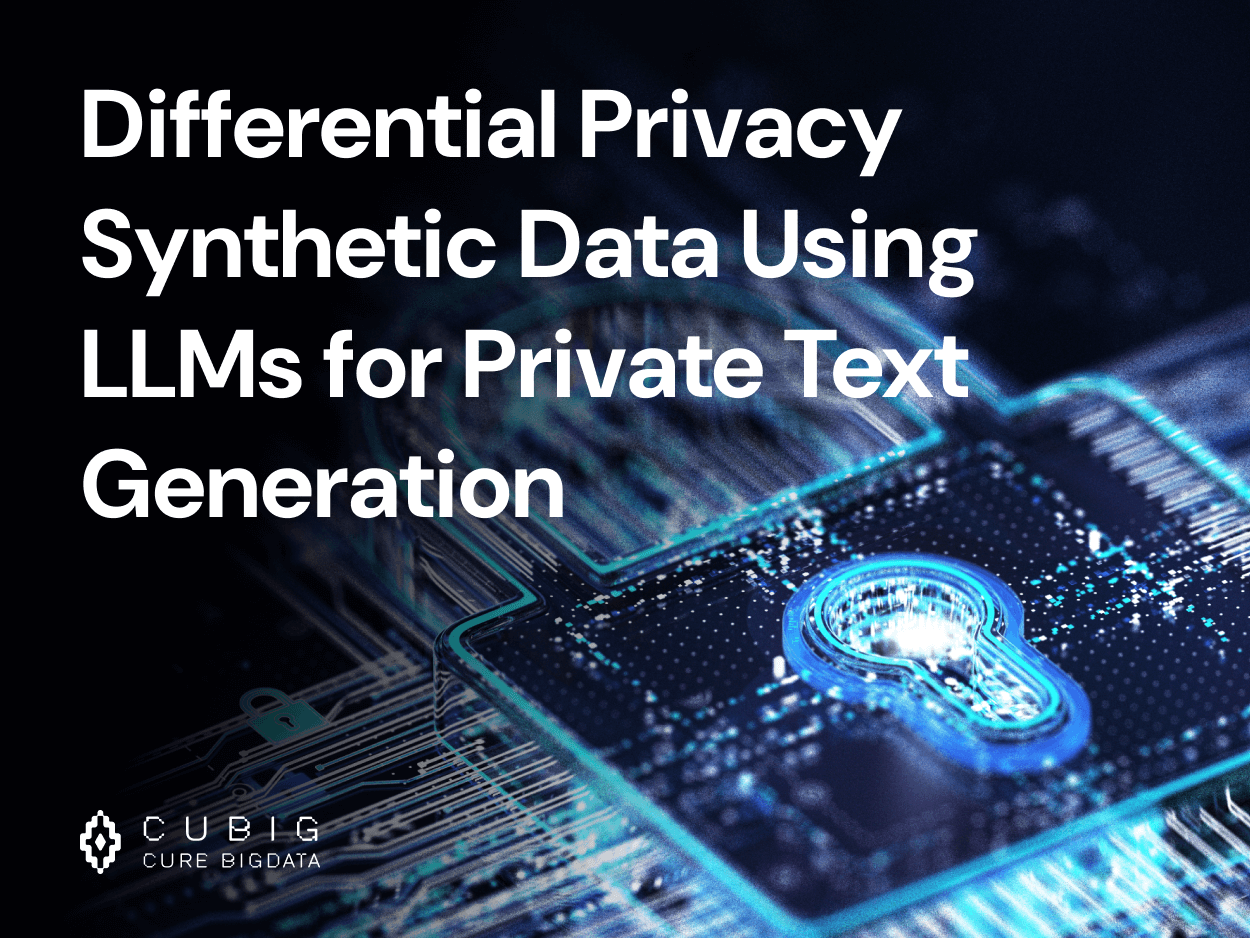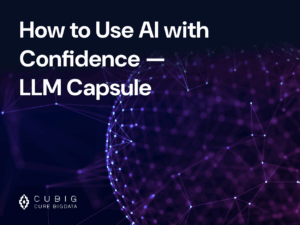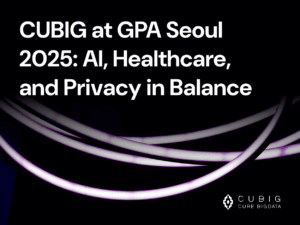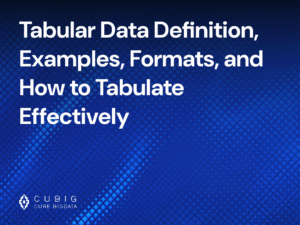Differential Privacy Synthetic Data Using LLMs for Private Text Generation
Table of Contents
What is Differential Privacy Synthetic Data?
Differentially private synthetic data refers to artificially generated datasets that replicate the statistical characteristics and structural patterns of real-world data while offering formal privacy guarantees through differential privacy (DP) techniques. Unlike traditional anonymization or de-identification methods—which are increasingly vulnerable to re-identification attacks—differential privacy provides a mathematically rigorous framework to limit the influence of any single individual’s data on the final output. This is achieved by injecting carefully calibrated random noise during the data generation or model training process, making it provably difficult for adversaries to infer whether any specific individual’s data was included in the original dataset.
Synthetic data generated under differential privacy aims to retain the utility of the original data, enabling meaningful analysis, model training, or system testing, without exposing sensitive personal information. This balance is particularly important in highly regulated sectors such as healthcare (where compliance with HIPAA is required), finance (under GDPR or local data protection laws), and public services (where statistical releases must not compromise citizen privacy).
Moreover, advances in generative modeling—such as the use of Diffusion Models and LLMs—allow for high-fidelity synthetic data generation that closely mirrors the distribution of real datasets. When coupled with DP, these models can mitigate privacy risks even in scenarios involving adversarial attacks like membership inference. In this way, differentially private synthetic data becomes a powerful enabler for safe data sharing, collaborative analytics, and AI development in privacy-sensitive domains.
Harnessing LLMs to Create Private Synthetic Text
How large language models (LLMs) can be adapted to produce privacy-preserving synthetic data
Large language models (LLMs) and their specialized counterparts have unlocked powerful capabilities in generating contextually rich and human-like text. By leveraging large-scale corpora spanning diverse domains, these models learn complex semantic patterns and linguistic structures, making them ideal tools for generating synthetic text across sectors.
To safely harness LLMs to create private synthetic text, researchers have increasingly turned to differential privacy (DP) techniques. During training, methods like Differentially Private Stochastic Gradient Descent (DP-SGD) introduce controlled noise to gradient updates, ensuring that no individual data point disproportionately influences the model.
At the inference stage, mechanisms such as probabilistic decoding, output filtering, and content sanitization further reduce the risk of private information resurfacing. These privacy-preserving practices are especially vital when LLMs are used to simulate patient records, financial logs, legal narratives, or other sensitive content in regulated environments.
Prompt filtering, sensitivity-aware response control, federated learning, membership inference audits, and ε-budget tuning are increasingly adopted to further improve privacy guarantees.
By embedding these safeguards into both model development and deployment workflows, organizations can confidently leverage LLMs to generate synthetic text that mimics real-world data without compromising individual or institutional privacy.
Key Technologies and Methodologies in Differential Privacy Synthetic Data
Differential Privacy Mechanisms: Laplace, Gaussian, and Exponential
| Mechanism | Best Used For | Privacy Guarantee | Noise Distribution |
|---|---|---|---|
| Laplace | Simple queries (e.g., counts, sums) | Pure ε-DP | Laplace (symmetric) |
| Gaussian | Machine learning training, repeated queries | Approximate (ε, δ)-DP | Gaussian (normal) |
| Exponential | Non-numeric outputs (e.g., selections) | Pure ε-DP | Sampling based on utility score |
Laplace and Gaussian mechanisms form the mathematical foundation of differential privacy by introducing calibrated noise to sensitive computations. The Laplace mechanism adds noise drawn from a Laplace distribution and is typically used in settings where the query has a clearly bounded sensitivity—such as simple counting or summation queries. It provides pure ε-differential privacy and is well-suited for statistical aggregations where exact values are not required.
The Gaussian mechanism, on the other hand, introduces noise from a Gaussian distribution and supports (ε, δ)-differential privacy. It is particularly effective in scenarios involving repeated queries or complex tasks such as training machine learning models, where advanced composition analysis is required to account for cumulative privacy loss.
The Exponential mechanism is designed for use cases where the outputs are not numerical but categorical—for example, selecting the best item from a set of choices. Instead of adding noise to the output value itself, it assigns a utility score to each possible output and samples from the options with a probability proportional to the exponential of the utility score. This ensures that higher-quality outputs are preferred, while still maintaining sufficient randomness to protect individual contributions.
Synthetic Data Generation Techniques: GANs, VAEs, DMs and Language Models
| Model | How It Works | Strengths | Limitations |
|---|---|---|---|
| GANs | Generator vs Discriminator adversarial training | High realism in outputs | Training instability, mode collapse |
| VAEs | Probabilistic encoding/decoding with latent variables | Good generalization and diversity | Blurrier outputs for image or text data |
| Diffusion Models | Learn to reverse noise added to data | High fidelity, controllable generation | Slow generation process |
| Language Models (LLMs) | Predict next tokens from large corpora | Excellent text generation and structure | Risk of memorization if not DP-trained |
Generative Adversarial Networks (GANs), Variational Autoencoders (VAEs), Diffusion Models (DMs), and language models each offer unique approaches to generating synthetic data. GANs consist of a generator and discriminator in a competitive setup, producing realistic outputs through iterative refinement. VAEs model data distribution through probabilistic encoding and decoding, capturing latent structure to produce diverse synthetic examples. DMs work by gradually adding noise to data and then learning to reverse the process, making them particularly effective for high-quality image or time-series generation. Language models like GPT operate on token sequences and probabilistic prediction, excelling in structured text synthesis. When integrated with differential privacy—either through DP-SGD during training or post-hoc filtering—they reduce the risk of reproducing identifiable training data. These models are evaluated not only for realism but also for privacy leakage through audits and membership inference attacks. Privacy-enhanced versions of these models are becoming essential tools for sectors like healthcare and finance, where data sensitivity is paramount and access to real datasets is restricted.
Privacy Budget Management and Noise Calibration
The privacy budget, represented by epsilon (ε), is a critical parameter that quantifies the privacy guarantee offered by a system employing differential privacy. A lower ε indicates stronger privacy, as individual data points have less influence on the output. However, this often comes at the cost of reduced data utility or model accuracy. Effective privacy budget management involves determining the optimal ε for a given use case, along with choosing appropriate noise mechanisms and frequency of data access. Dynamic noise calibration techniques, such as adaptive clipping or per-example gradient noise in machine learning, help maintain a balance between privacy protection and practical performance. Additionally, tools like Rényi Differential Privacy and privacy accounting frameworks help track cumulative privacy loss over multiple queries or training epochs. Managing this trade-off is essential to ensuring synthetic data remains both private and useful, especially in regulatory environments such as HIPAA or GDPR.
How to Implement Differentially Private Synthetic Data Generation
Define Privacy Requirements and Risk Tolerance
Before initiating any synthetic data project, organizations must clearly articulate their privacy objectives, legal obligations, and acceptable levels of disclosure risk. This foundational step includes mapping relevant regulations such as GDPR, HIPAA, or sector-specific standards, and determining the sensitivity level of various data attributes. Stakeholders should collaboratively define what constitutes a privacy breach in their context and how much data utility they are willing to trade off. These inputs will directly influence the selection of differential privacy parameters and modeling strategies. A formal data protection impact assessment (DPIA) may also be conducted at this stage to guide design decisions.
Select Appropriate Differential Privacy Models
Once privacy goals are established, the next step is choosing the most suitable differential privacy mechanism based on data characteristics and usage scenarios. For example, Laplace mechanisms are commonly used for count data and simpler queries, while Gaussian noise may be better suited for continuous variables and aggregated statistics under approximate differential privacy. In more advanced use cases—such as temporal data, multimodal datasets, or sequential modeling—techniques like Rényi Differential Privacy (RDP) or zero-Concentrated Differential Privacy (zCDP) can provide tighter privacy accounting. This stage also includes defining the privacy budget (ε, delta), selecting the domain-specific noise calibration approach, and ensuring composability across multiple queries or model iterations.
Train with Synthetic or Augmented Data Using LLMs
Large language models (LLMs) can serve as powerful engines for generating synthetic datasets that mirror real-world structure and semantics. Training such models under differential privacy constraints requires injecting noise into gradients during optimization (e.g., DP-SGD), limiting the influence of any single data point. In some cases, federated learning is employed to further preserve locality of sensitive data, especially in edge-based environments. Alternatively, privacy filters can be applied post-hoc to redact or reshape generated content that risks exposing identifiable information. Depending on the use case—tabular data synthesis, dialogue simulation, code generation, or domain-specific text augmentation—the model architecture and training pipeline must be adapted to ensure both utility and privacy goals are met.
Evaluate Utility vs Privacy Trade-offs
Effective implementation of differentially private synthetic data requires continuous evaluation of how well the synthetic dataset balances usefulness and privacy. Utility can be assessed using metrics such as similarity to the original data distribution (e.g., KL divergence, Wasserstein distance), retention of predictive performance in downstream tasks (e.g., accuracy, F1-score), or preservation of key correlations. On the privacy side, formal guarantees are quantified using epsilon (ε) and delta (δ), along with empirical assessments like membership inference resistance. A/B testing against non-private baselines and stress testing with adversarial simulations can further validate the practical robustness of the privacy-preserving pipeline.
Monitor and Adjust Privacy Budget Over Time
Differential privacy is not a one-time setting but an ongoing process. Privacy budgets can deplete over time as more queries or generations are performed, especially in interactive or continual learning systems. Organizations must implement privacy accounting tools to track cumulative privacy loss and establish thresholds for alerting or reconfiguration. In dynamic environments—such as adaptive AI systems or multi-tenant platforms—adjustments to the privacy budget may be necessary in response to changes in user behavior, regulatory updates, or risk reassessments. Periodic audits, access control reviews, and versioning of synthetic datasets can further ensure long-term compliance and data governance.
Case Studies and Industry Applications
NIST Synthetic Data Challenge: A Benchmark for Privacy Innovation
The NIST Synthetic Data Challenge, hosted by the National Institute of Standards and Technology, is a key initiative designed to accelerate advancements in privacy-preserving data generation. It invites participants from academia, industry, and research institutions to develop synthetic datasets that achieve a delicate balance between statistical fidelity and robust privacy protection. Solutions are evaluated on their ability to maintain analytical utility while withstanding various privacy attacks. This challenge has become a proving ground for innovative approaches, such as differentially private generative models and privacy risk assessment frameworks, fostering collaboration and establishing benchmarks that guide future development in the field.
Google’s Use of Differential Privacy in LLM Synthetic Training Data
To address growing concerns about data privacy in the era of large-scale AI, Google has actively integrated differential privacy mechanisms into the creation of synthetic datasets used to train large language models (LLMs). By embedding privacy-preserving algorithms during data generation, Google ensures that individual user information cannot be reconstructed or traced, even indirectly. Their work demonstrates that it is possible to retain linguistic richness and contextual accuracy in synthetic data, while mathematically bounding the risk of personal data exposure. This approach supports responsible AI development at scale, particularly for products that rely on sensitive user interactions, such as smart assistants and personalized recommendations.
Healthcare Industry: Simulated EMR Records for AI Training
In the healthcare domain, real patient data—especially electronic medical records (EMRs)—is highly sensitive and protected under laws such as HIPAA and GDPR. This makes access for AI training and research both difficult and risky. Synthetic EMR generation platforms offer a solution by producing simulated patient records that capture complex clinical patterns, disease progressions, treatment plans, and outcomes, all without referencing any real individual. These datasets are used to train diagnostic algorithms, support clinical decision systems, and simulate patient cohorts for drug response studies. By enabling realistic yet private data modeling, synthetic EMRs bridge the gap between regulatory compliance and innovation in medical AI.
Financial Sector: Synthetic Transactions for Fraud Detection Models
The financial sector faces a dual challenge: developing sophisticated fraud detection models while strictly safeguarding customer transaction data. Traditional data anonymization often falls short in preventing re-identification, especially when models require granular behavioral signals. Azoo’s synthetic data solutions address this by generating high-fidelity, statistically grounded transaction datasets that mimic real-world banking behavior, including spending patterns, account flows, and even fraudulent scenarios. These synthetic datasets enable institutions to train and test machine learning models with realistic edge cases and rare event occurrences—such as identity theft or account takeover—without ever exposing genuine customer records. As a result, financial institutions can enhance model robustness, comply with data privacy regulations, and accelerate development lifecycles.
Benefits of Differential Privacy Synthetic Data
Strong Privacy Guarantees Without Losing Analytical Value
Differential privacy offers mathematically proven guarantees that individual-level information remains protected, even in complex datasets. When applied to synthetic data generation, it ensures that no specific individual’s data can be reconstructed or inferred from the output. Despite this strong privacy assurance, the resulting datasets can retain high statistical fidelity, enabling organizations to perform robust analytics, build predictive models, and conduct exploratory research. This makes differentially private synthetic data ideal for sectors like healthcare, finance, and public policy, where both insight accuracy and privacy compliance are mission-critical.
Safe Data Sharing and Collaboration Across Organizations
Collaborative projects between enterprises, research institutions, and vendors often require access to sensitive datasets—a scenario fraught with privacy and compliance risks. Differentially private synthetic data mitigates these concerns by enabling data sharing without exposing any real individual’s information. Organizations can confidently share insights, test algorithms, and build joint machine learning pipelines across departments or partner entities. This not only accelerates innovation but also enhances interoperability, as stakeholders no longer need to navigate cumbersome access controls or restrictive data usage agreements.
Compliance with GDPR, HIPAA, and Other Regulations
Differential privacy is increasingly recognized by global regulators as a leading framework for privacy-preserving data use. Under GDPR, it supports the principle of data minimization and satisfies conditions for anonymization, thus exempting datasets from certain legal constraints. In the United States, HIPAA encourages de-identification strategies that align well with differential privacy’s protective mechanisms. Organizations that adopt these techniques can more easily demonstrate compliance during audits, reduce legal exposure, and meet privacy-by-design mandates in highly regulated environments.
Reduced Reliance on Sensitive Real-World Data
Obtaining and managing real-world datasets that contain personal or confidential information introduces significant risks, including data breaches, misuse, and ethical concerns. By using synthetic data generated through differential privacy mechanisms, organizations can significantly reduce their reliance on sensitive source material. This not only lowers operational and compliance burdens but also creates a more agile environment for data-driven experimentation, especially in early-stage model development or hypothesis testing where access to real data is often limited or delayed.
Challenges and Considerations
Balancing Utility with Privacy Budget
One of the core challenges in applying differential privacy is managing the privacy-utility trade-off. The privacy budget (commonly denoted by epsilon) dictates how much noise is added to protect data, with lower values offering stronger privacy at the cost of reduced accuracy. Finding the optimal balance requires careful tuning, context-aware modeling, and often iterative testing to ensure that the synthetic data remains practically useful without violating privacy constraints. This tension becomes more pronounced in high-stakes domains where both precision and protection are critical.
Computational Overhead in Training LLMs with Differential Privacy
Applying differential privacy to the training of large language models (LLMs) involves significant computational cost. The addition of calibrated noise to gradients, privacy accounting, and secure aggregation mechanisms all introduce latency and resource demands. This can slow down training cycles, require more powerful infrastructure, and complicate deployment pipelines. For organizations scaling up private AI systems, these challenges necessitate trade-offs in model size, update frequency, or training architecture, and often call for optimization strategies like privacy-aware model compression or federated fine-tuning.
Data Bias in Synthetic Outputs
Synthetic data models are only as unbiased as the training data and generation methods used. If the
Interpretability and Trust in Synthetic Datasets
As synthetic data becomes more widely adopted in analytics, AI development, and data sharing, ensuring interpretability and trust has become a key focus. Users and stakeholders need to understand how the synthetic data was generated, what real-world patterns it preserves, and how it differs from the original data. Transparent methodologies, clear documentation, and validation metrics all contribute to building confidence in the reliability and ethical use of synthetic datasets. Establishing trust is especially important in regulated industries, where decisions based on data must be explainable and auditable.
Future Directions: Evolving Landscape of Private Synthetic Data
From Classical Noise Addition to Privacy-Aware LLM Inference
The traditional use of differential privacy often centered on statistical noise injection at the dataset or model training level, aiming to prevent re-identification of individuals within data. However, recent advancements are shifting this paradigm toward inference-level privacy in large language models (LLMs). This approach embeds privacy constraints directly into the model’s output generation process, enabling real-time privacy control during deployment. Techniques such as prompt-based filtering, private decoding, and adaptive response bounding allow models to interact with sensitive inputs without leaking protected information. This evolution signals a move from static privacy protection to dynamic, context-aware systems, broadening the applicability of LLMs in regulated domains like healthcare, law, and finance.
Integration with Federated Learning and Edge Computing
Federated learning enables multiple clients or devices to collaboratively train a shared model without exchanging raw data, making it a natural fit for privacy-sensitive applications. When combined with differential privacy, this paradigm offers a robust privacy layer by adding noise to model updates before they are aggregated. Edge computing further extends this capability by allowing models to run locally on devices such as smartphones, wearables, or IoT sensors, keeping data on-device by default. This integration is especially powerful in sectors like personalized healthcare, smart manufacturing, and mobile banking, where latency, bandwidth, and data sensitivity are critical. Together, these technologies are laying the groundwork for distributed, privacy-respecting AI ecosystems.
Policy Frameworks and Open Benchmarking (e.g., NIST)
As synthetic data technologies mature, the need for transparent governance and standardized evaluation has become paramount. Regulatory and policy frameworks—such as those emerging from the EU’s AI Act or the U.S. Office of Science and Technology Policy—are beginning to outline requirements for synthetic data generation, usage, and disclosure. In parallel, open benchmarking initiatives like the NIST Synthetic Data Challenge provide structured environments to assess privacy risks, data utility, and adversarial robustness in a reproducible manner. These benchmarks not only validate technical solutions but also foster trust among stakeholders, enabling safer
FAQs
What is differentially private synthetic data?
Synthetic data generated using differential privacy techniques, designed to protect individuals while retaining statistical usefulness.
How do LLMs help in generating private synthetic data?
LLMs learn data distribution patterns and can generate high-quality synthetic text. When combined with privacy-preserving techniques, they prevent personal data leakage.
Is synthetic data compliant with regulations like GDPR or HIPAA?
Yes, when generated using differential privacy, synthetic data meets the criteria for anonymization under major regulatory frameworks.
How does Azoo ensure data utility with privacy?
At Azoo, we offer a production-ready solution called DTS (Data Transformation System)—a secure synthetic data generation platform designed to help organizations meet privacy regulations such as GDPR and HIPAA, without requiring deep expertise in AI or compromising data utility. While classical differential privacy methods like DP-SGD provide strong theoretical guarantees, they often come with significant downsides in real-world applications. They can degrade model performance and typically require customers to manage and fine-tune complex AI training workflows themselves. DTS is built to solve this gap. It enables users to generate high-quality, differentially private synthetic data with just a few clicks—no manual model training, no parameter tuning, and no exposure of sensitive data. DTS is available in two deployment modes to support different customer environments: Integrated Mode: Deployed directly within the customer’s internal network, this version allows organizations to generate synthetic data entirely on-premise, without ever transmitting original data outside their secure infrastructure. It’s ideal for highly regulated sectors with strict data residency or network isolation requirements. Decoupled Mode: Designed for customers who lack access to powerful GPU infrastructure, this lightweight version runs on CPU or low-tier GPU environments. Even in this setup, original data remains local and never leaves the customer’s internal system. In both modes, Azoo never accesses or collects original data. Instead, Azoo provides candidate synthetic data samples, which are delivered to the customer’s environment. There, DTS compares them with the customer’s original data and selects the most similar ones, applying differential privacy mechanisms during the selection process. This ensures strong privacy guarantees while preserving data utility. As a result, customers can obtain privacy-protected synthetic data that closely reflects the characteristics of their real data—without ever exposing it, and without needing to manage AI models themselves. It’s privacy by design, made easy.
What is the NIST synthetic data challenge and why is it important?
It is a competition hosted by the U.S. National Institute of Standards and Technology to benchmark synthetic data techniques that balance utility and privacy. It drives innovation and establishes best practices in the field.
CUBIG's Service Line
Recommended Posts









